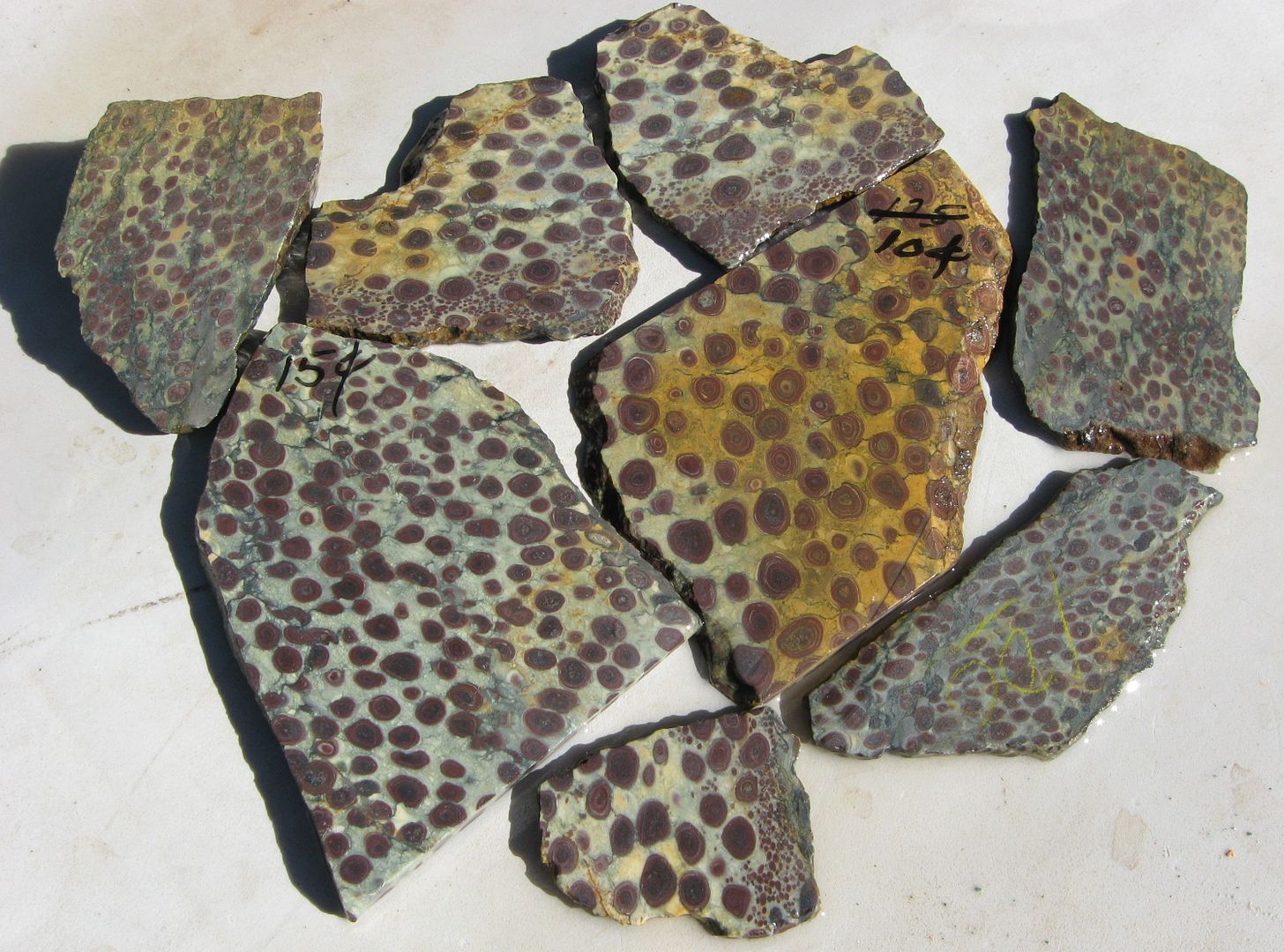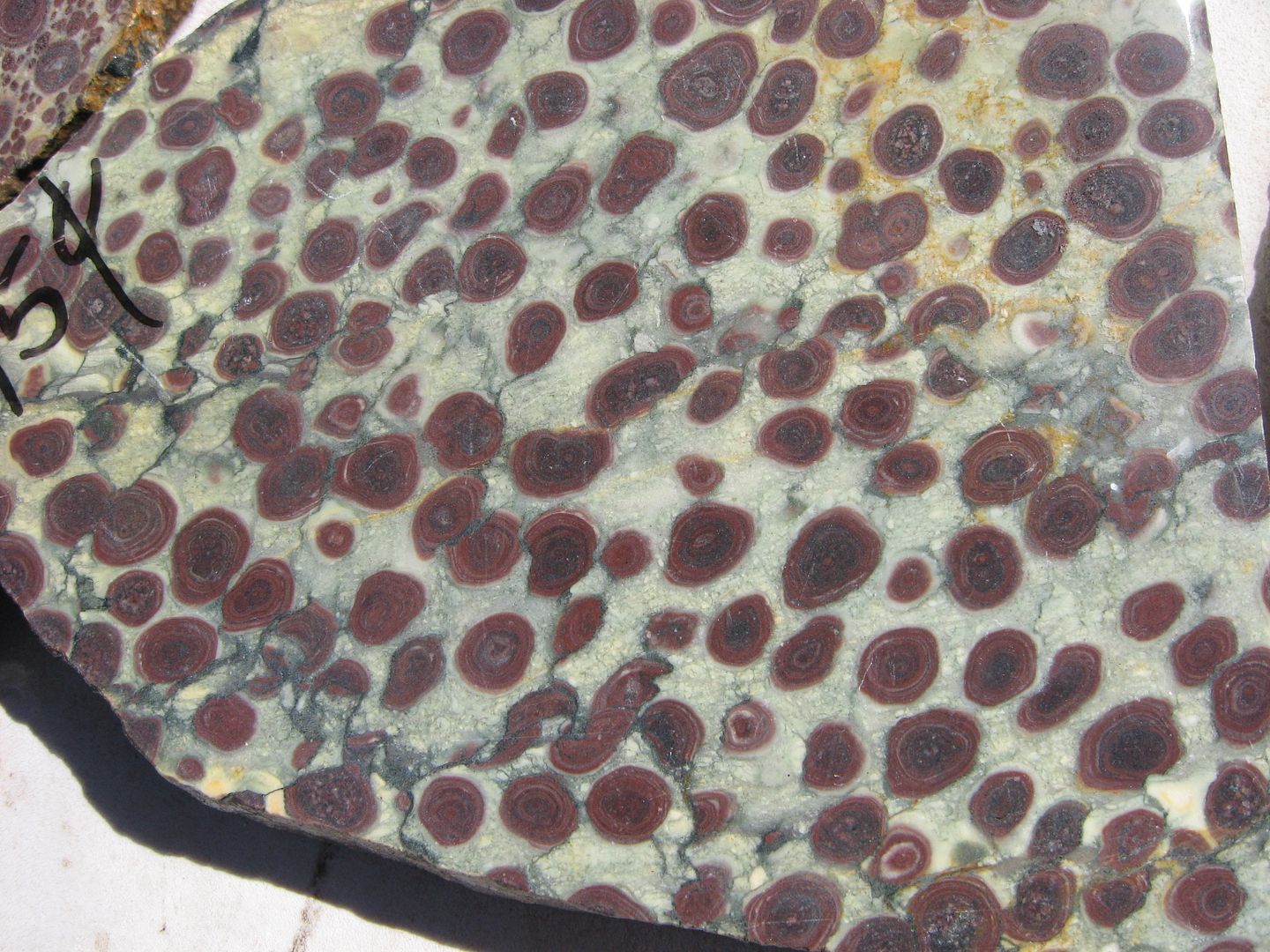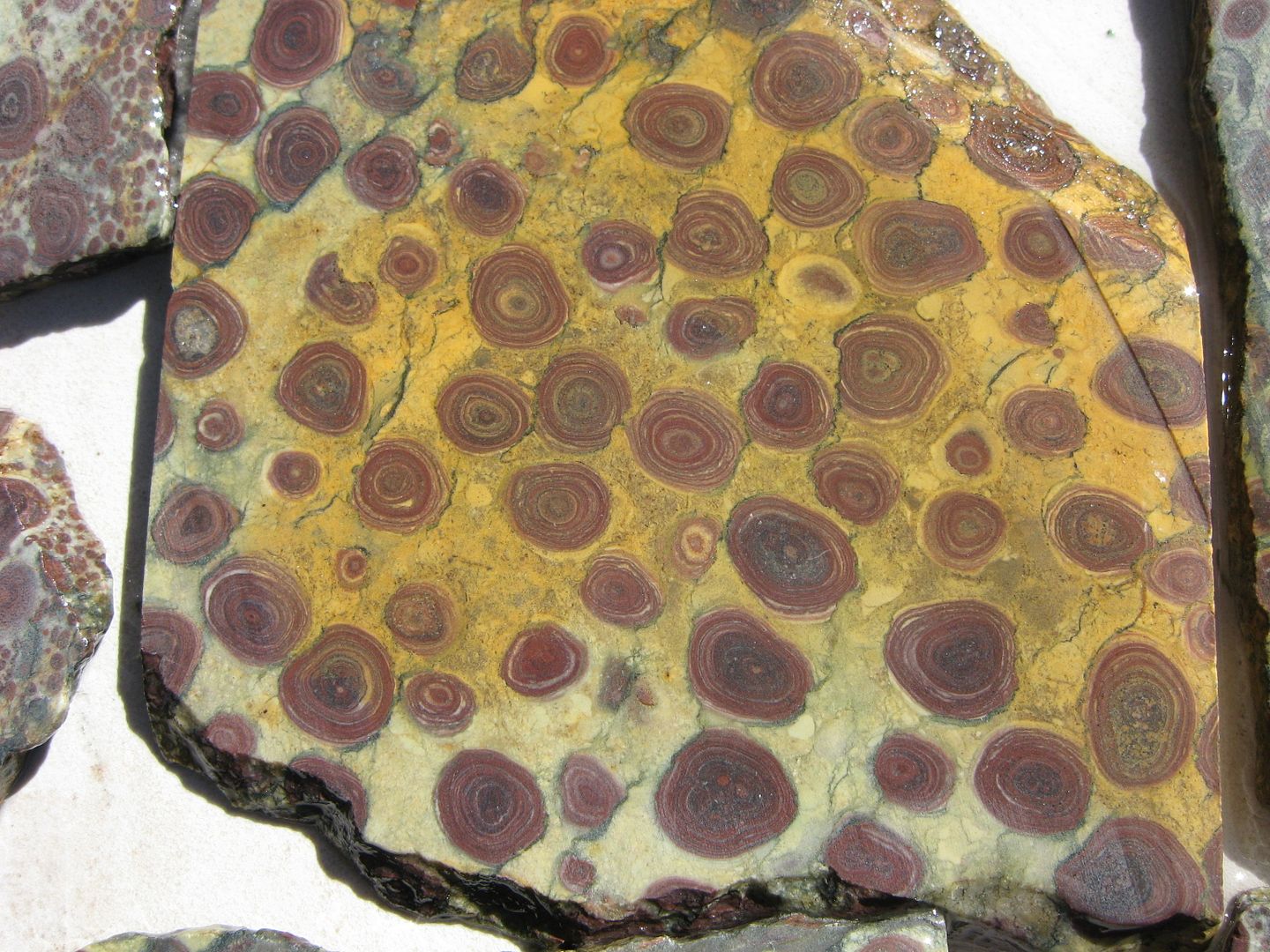Oncolites, Oolites. Stromatolites, Pisolites
Jan 28, 2018 10:17:04 GMT -5
adrian65, rockjunquie, and 5 more like this
Post by fernwood on Jan 28, 2018 10:17:04 GMT -5
Yes, I love the many Oolites/Ooliths I am finding. Hoping others might be able to help define the differences between Oolites and other, similar rocks. Photos would be great.
My understanding is that Ooliths are small, spherical structures (<2 mm) that form by deposits of numerous concentric layers of calcite on a central nucleus such as a shell fragment or sand grain. The environment of deposition would have been areas where strong bottom currents or wave action rolled the fragment around in carbonate-rich sea water. This would include environments like beaches and tidal flats. Where I live, Ooliths became a replacement for aquatic creatures that were no longer alive. The Ooliths made their way into the decaying cavities of corals, bones and plants. Some also ended up on top of these, forming either a layer, or deposits. The specific color of the Ooliths, is determined by what organic material or mineral was present at the time. If it was white shell/bone, in an areas with pure water, free of certain minerals and plants, then the Oolith will usually be white. If there was organic matter of color in the area, then the Oolith may have a variety of colors. If the Oolith formed in a cavity of a colorful decaying item, then it might have picked up the colors of where it ended up. Depending on wave action, water depth/temperature and other decaying material in the area, an Oolith may be composed of several different colors. The shape of the Oolith, may not be concentric round, if other organic matter was picked up, depending on wave action and the size of the other material.
Oncolites and Stromatolites have a similar structure to Ooliths, but are much larger (up to 10 cm), can be round or irregular-shaped, and are formed by a different mechanism. Like Ooliths, they nucleate on a shell or other fragment, but are built up by encrusting layers of blue-green algae or cyanobacteria. Stromatolites form in much the same way, but create columns, mats, or large heads. Stromatolites and Oncolites typically indicate a paleoenvironment of warm, shallow water in a calm sea, lagoon, or bay.
Please, add what you know and correct any errors I may have made.
Some photos below.
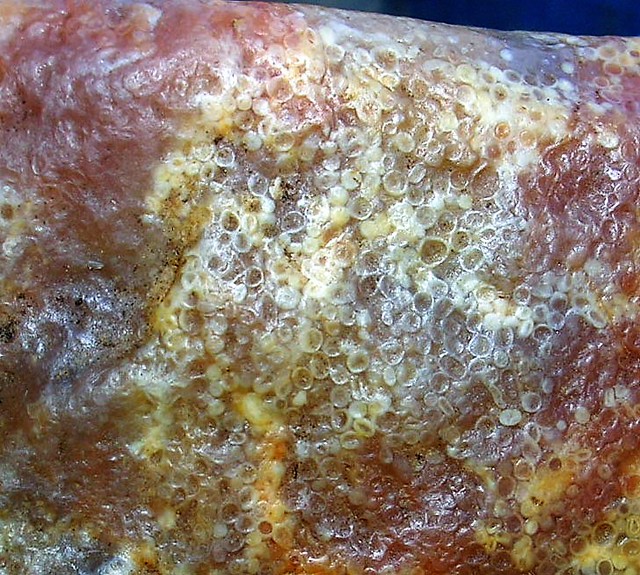 ool jasp qtz 1c
ool jasp qtz 1c Oolites in Quartz/Jasper.
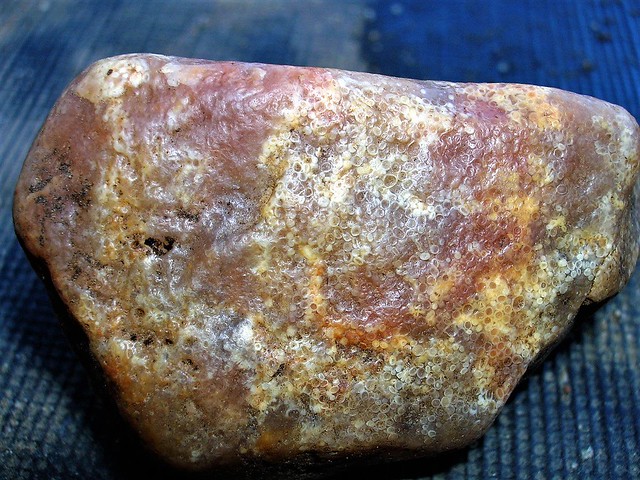 ool jasp qtz 1b
ool jasp qtz 1b Same specimen as previous.
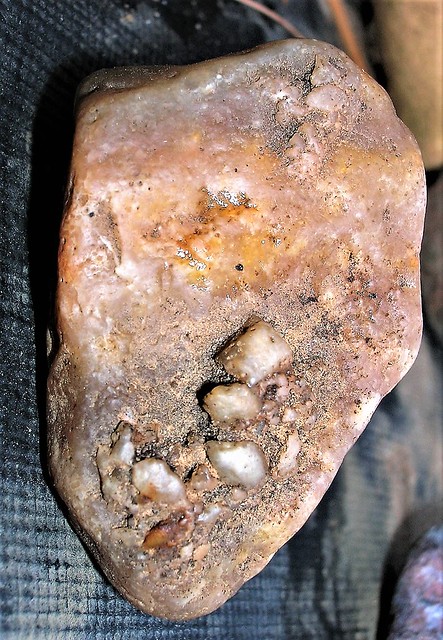 ool jasp qtz 1d
ool jasp qtz 1d Same specimen as previous.
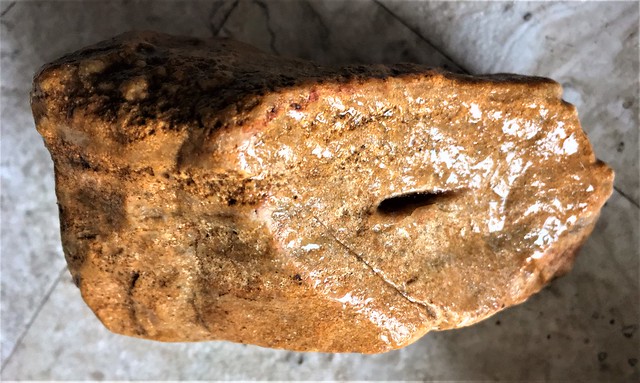 jasp-ool 2a
jasp-ool 2a Another example. This one is mostly shades of yellow. Contains Druzy quartz in the cavity.
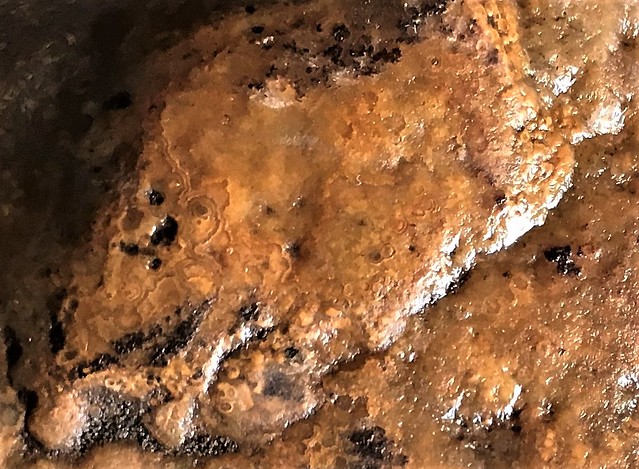 jasp-ool2
jasp-ool2 Close up of previous specimen.
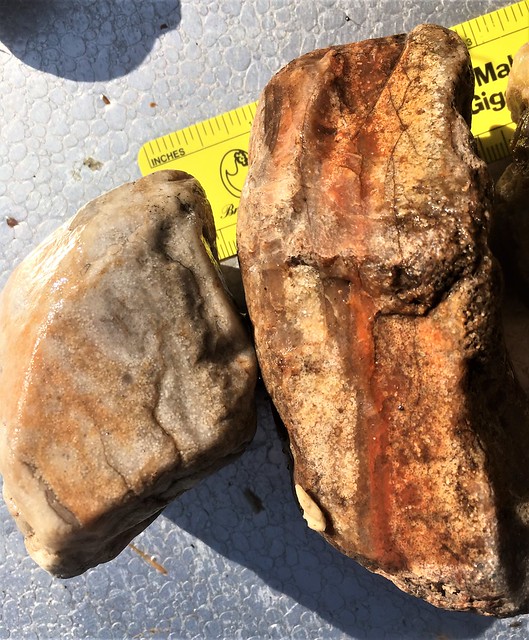 2 ools
2 ools Two examples of Ooliths.
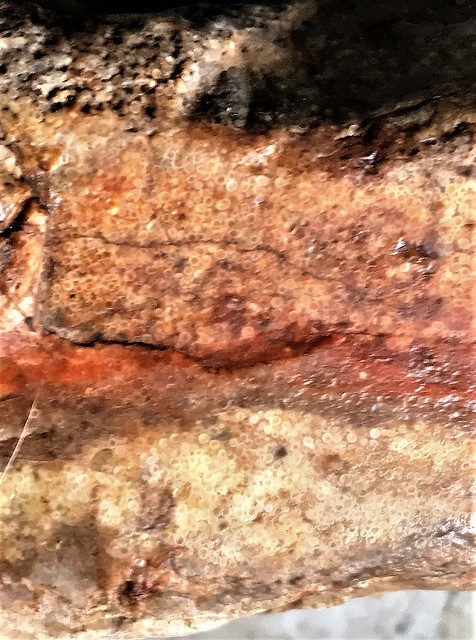 ool coral 2d
ool coral 2d Detail on above right specimen. Next photos are of this same specimen.
 ool coral 2d
ool coral 2d 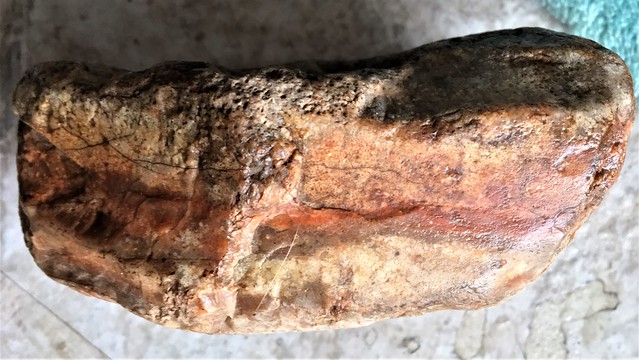 ool coral 2b
ool coral 2b 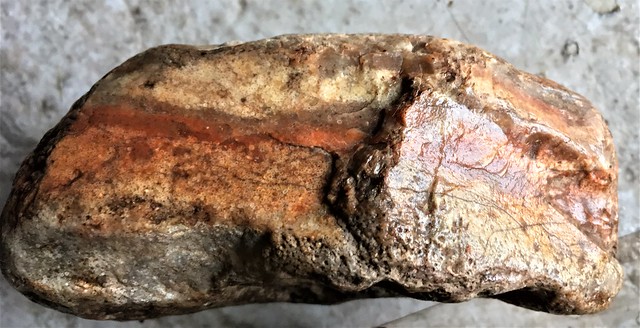 ool coral 2a by Fernwood Acres, on Flickr
ool coral 2a by Fernwood Acres, on FlickrCoral nodule with Oolith replacement.
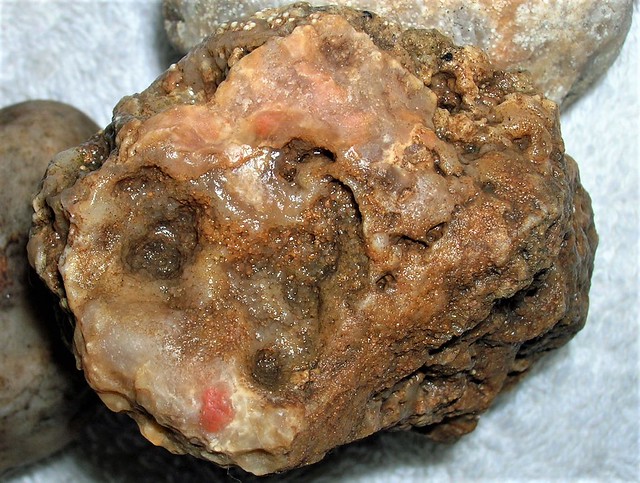 ool druz coral 1c
ool druz coral 1c Some Ooliths ended on the surface
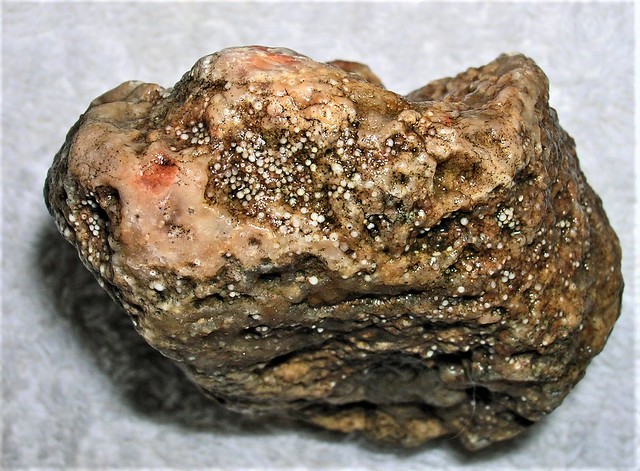 Ool druz coral 1b by Fernwood Acres, on Flickr
Ool druz coral 1b by Fernwood Acres, on FlickrSame as previous specimen.
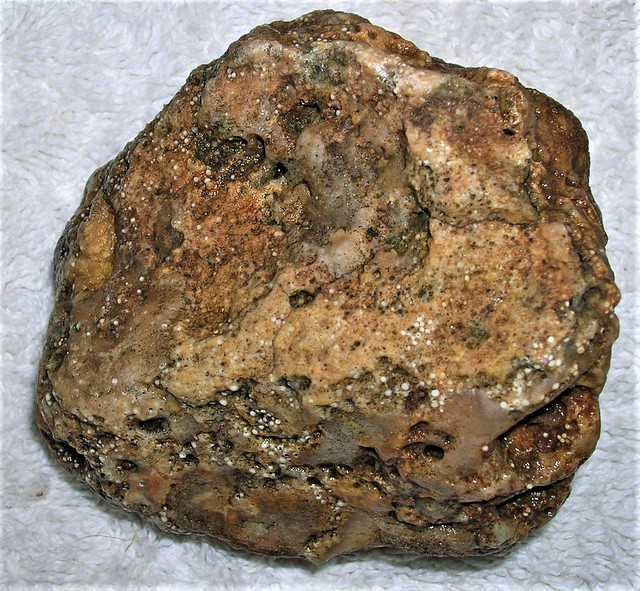 ool druz coral 1a
ool druz coral 1a Same as pervious.
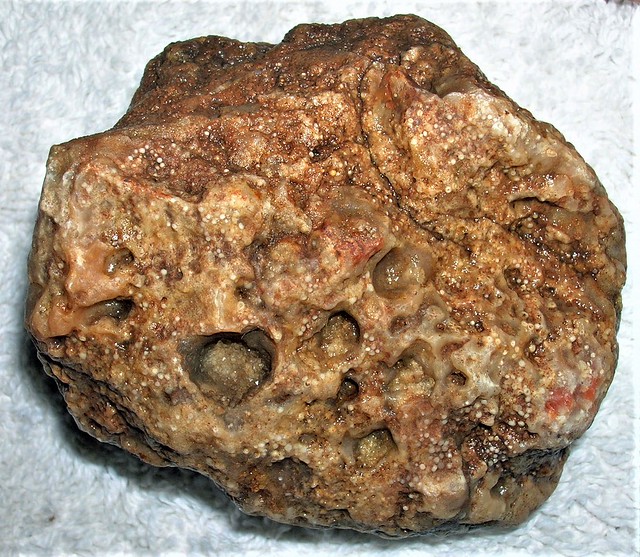 ool druz coral 1
ool druz coral 1 Oolith replacement in fossil coral nodule.
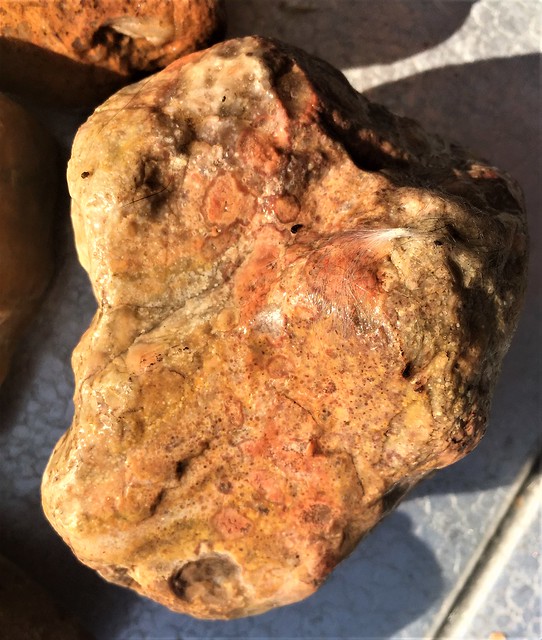 ool coral 3
ool coral 3 Thanks for lookin’, and please add your thoughts and photos. If this should be moved to another sub-forum, please move away. Did not know if it would be better here or in the Glossary one.



